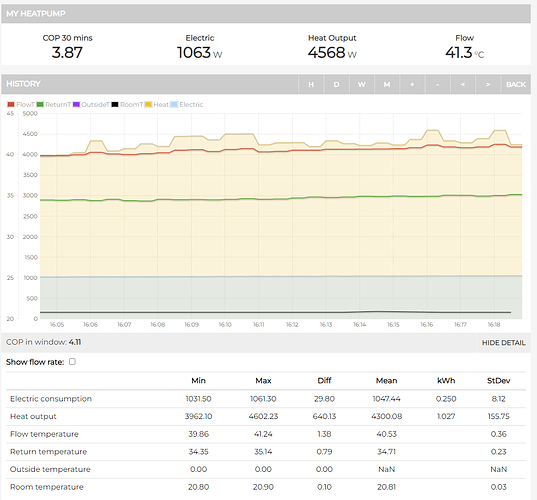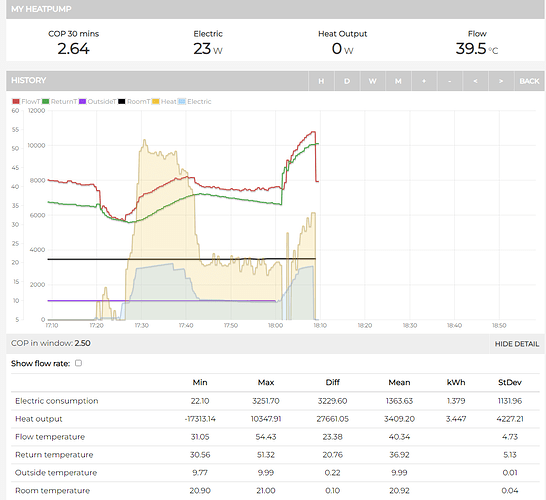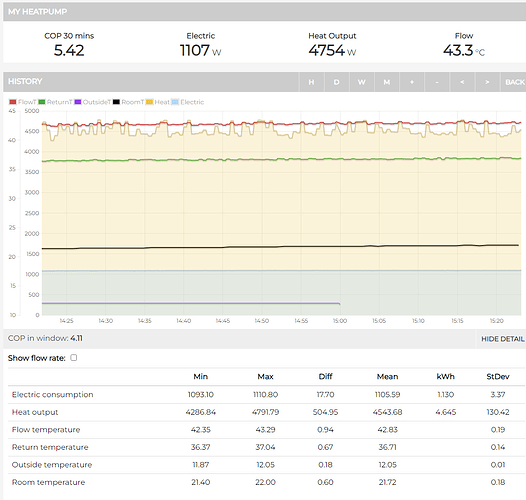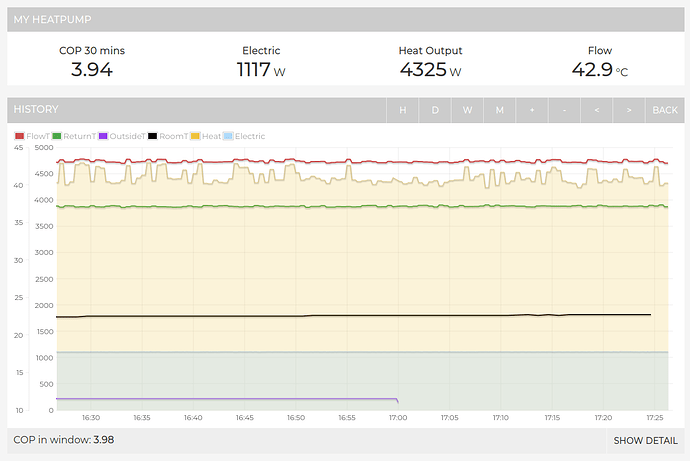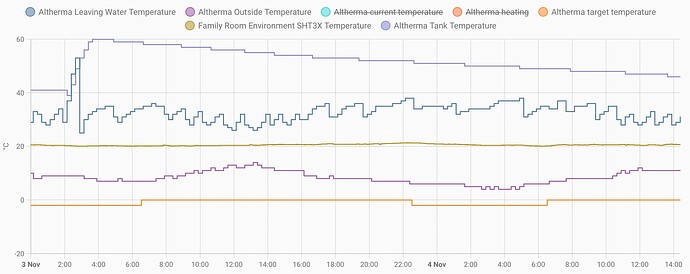Hi John,
What is your heat loss as calculated by Octopus?
Mine is massively overstated/overcalculate. They never listened and I knew my heat loss was around 4kW an hour at -5c outside and 21 inside.
I have analysed my data since I started heating 3 weeks ago and it confirms my heat loss at 4kW or less at -2/21. Octopus calculated 7.3kW.
They said that if it was less than 7 they would have installed a 7kW heat pump.
My radiators are big enough for the house and heat it comfortably at 30c flow and 7c outside, they are just not big enough to run the heat pump efficiently.
But I calculated a much bigger radiator requirement to satisfy my quest to run at low flow temperatures. My specification is about 180% of what I have now. I wish I had got they to change them at the time, they would have done it and it would be a lot less hassle than it is now.
My big mistake was not understanding the limitations of this heat pump, I never realised that its minimum output was so high.
But I think I can deal with it with some work, bigger radiators and increased heat loss by adding an area I didn’t intend to heat.
I am with you on COP isn’t everything but I felt the need to find out why I couldn’t get there, partly because I needed to know and partly to make sure the heat pump is working as it should be.
I think to that end we have succeeded.
Once I get a heating COP of 5 out of it I will be happy and then I can work out how much COP to give up to get the best electricity consumption in regards to comfort.
DHW is another difficult one. Mine is a bit erratic, I don’t really know why but I have taken to a daily heat to a higher temperature. My wife is happier and we use less electricity compared to a lower temperature + reheat.
I have abandoned the disinfection cycle for the time being.
I have repeated a lot of what I have said before but it is now quite a long thread and a summary is useful at times.
It will be interesting to see how you get on, when was it installed?
I know it’s money but I can’t recommend the OEM system enough, I would have been completely lost without it.
